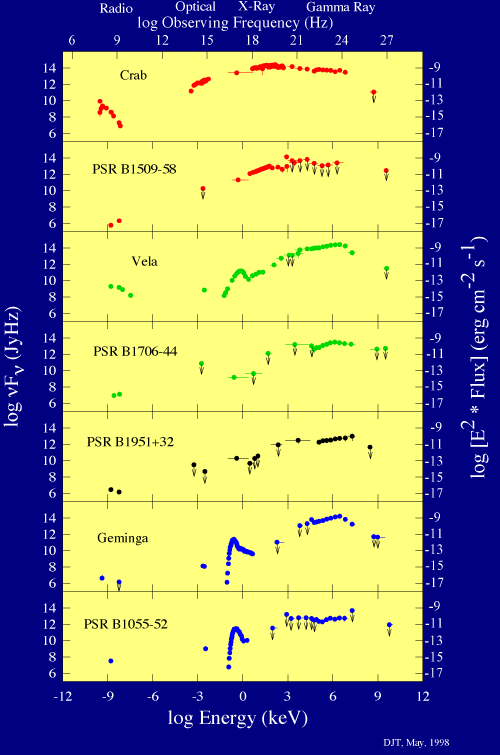Spectra of seven well-known pulsars
(Credit: D.J. Thompson (NASA/GSFC)) These energy spectra of seven high-energy pulsars are shown in a format that plots the power seen per decade of energy observed. All these pulsars have their maximum output in the hard X-ray to gamma-ray energy band, displaying vastly more energy at high energies than in the optical or radio bands. Pulsars, with their powerful electric and magnetic fields, produce many high-energy particles that radiate X-rays and gamma rays. In addition, some of these rotating neutron stars have "hot spots" on their surface that produce a "bump" in their spectra in the soft X-ray energy range. At the highest energies, all these pulsars show a drop-off in their output; the reason for this decrease remains unknown.
IMAGES |
By Mission |
Stars |
HEASARC Home | Observatories | Archive | Calibration | Software | Tools | Students/Teachers/Public Last modified: Thursday, 26-Jun-2003 13:48:45 EDT |


